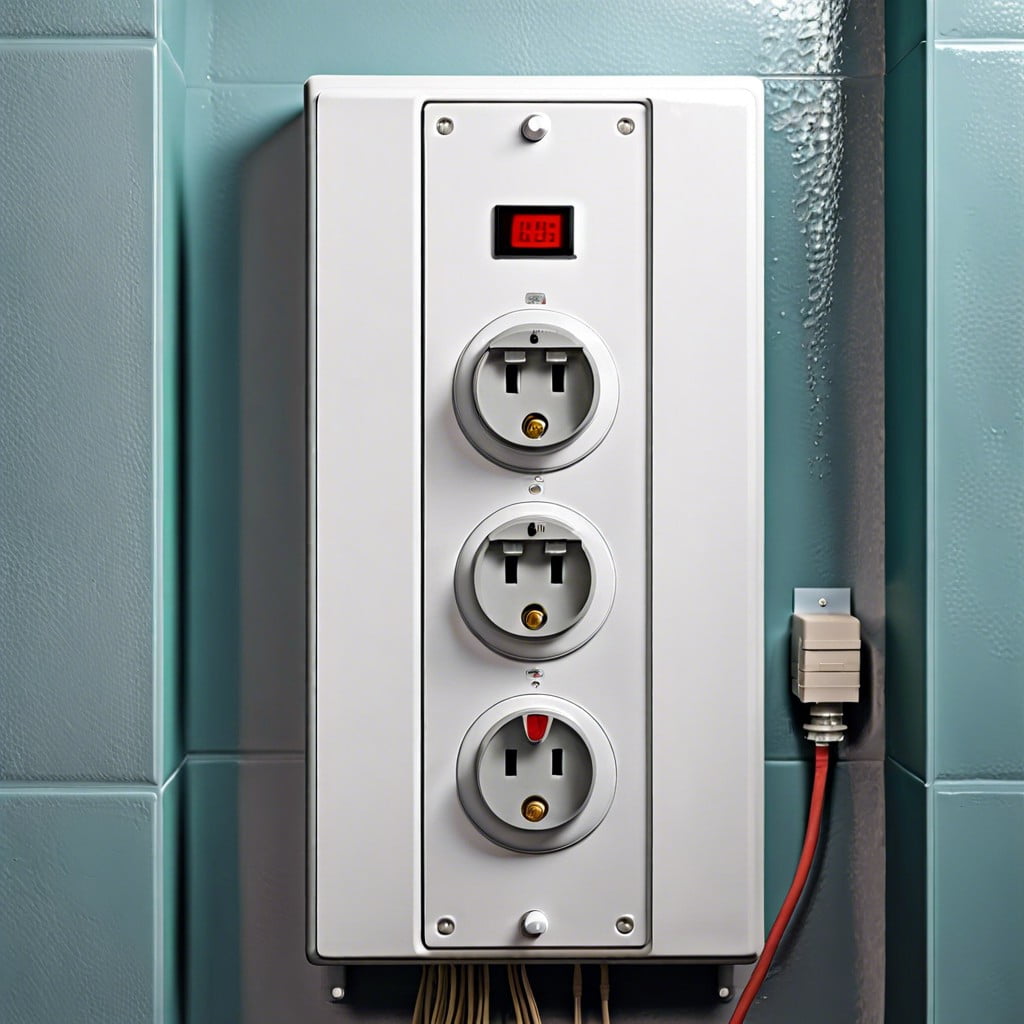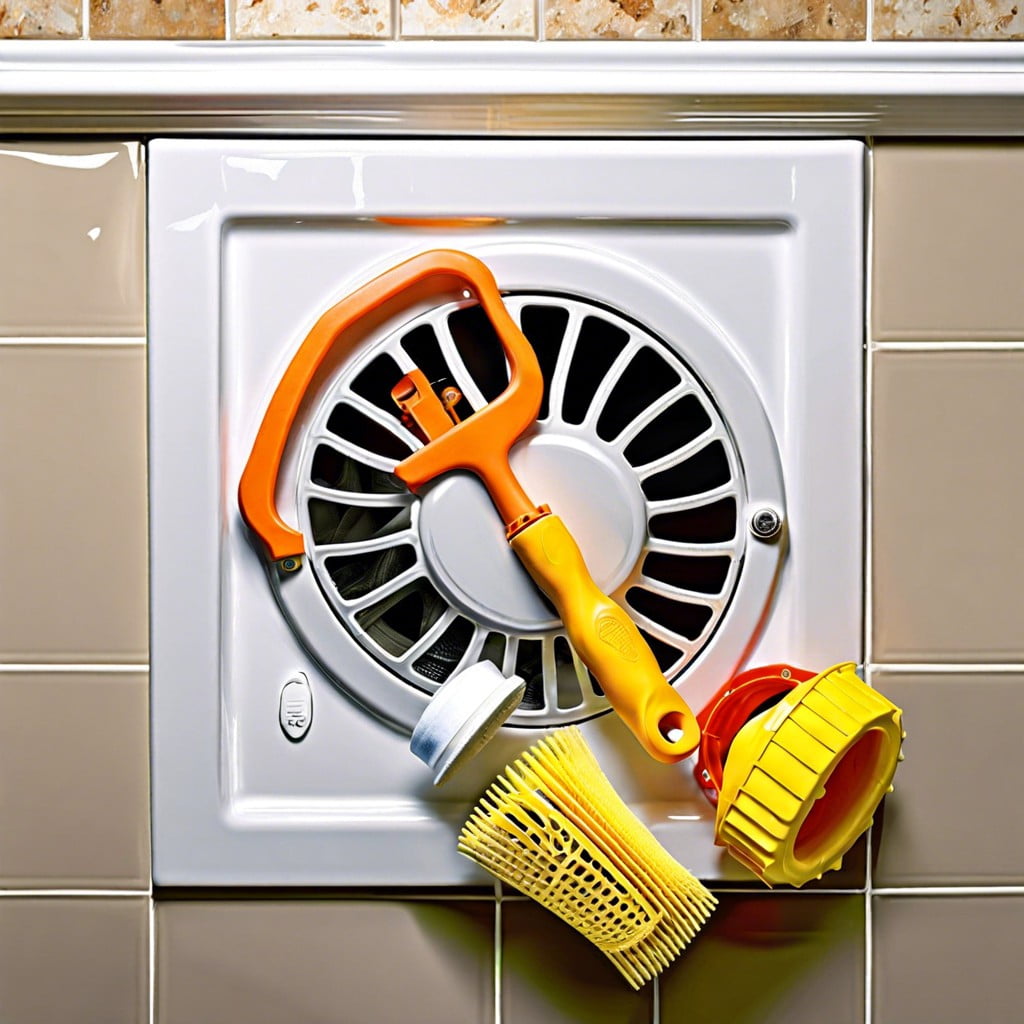Last updated on
Discover the straightforward steps to replace your bathroom exhaust fan and ensure your space remains well-ventilated and mold-free.
Key takeaways:
- Safety first: Shut off power, confirm with voltage tester.
- Assess existing setup: Check for damage, assess ductwork.
- Remove old fan: Disconnect power, unscrew and release cover.
- Install new fan: Check compatibility, align housing, seal ductwork.
- Test the fan: Check sound level, air movement, and electrical safety.
Preparing to Replace the Fan
Safety first—shut off the power at the circuit breaker to avoid any electrical accidents. Confirm the power is indeed off by using a non-contact voltage tester near the fan’s wiring.
Next, assemble your tools—typically a screwdriver, pliers, a utility knife, and possible replacement wiring or connectors are needed. Having a drop cloth or old towels handy will protect your bathroom surfaces and make cleanup easier.
Assess the situation—inspect your current exhaust fan setup. Look for any damage or issues with surrounding drywall which may affect the installation of the new unit. Determine if additional tools or materials might be required based on the initial assessment.
Finally, consider how the existing ductwork might influence your replacement project. Is the duct in good condition? Will you need to replace or adjust it to fit your new exhaust fan? Factoring in these elements before proceeding will streamline the installation process.
Removing the Old Fan
Before commencing the extraction, disconnecting the power at the circuit breaker is paramount—safety first! Unscrew or release the cover, taking care to handle it with care to avoid damage. You’ll often find the exhaust fan connected by a simple plug inside the housing; unplug it.
Proceed to loosen the fasteners securing the fan to the joist. In some cases, metal brackets or built-in tabs may be used to hold the fan in place. Gently manipulate these fixtures to free the fan. Keep all components together as they are removed; this can provide helpful clues for the installation of your new fan.
Take note of the existing ductwork and electrical connections. Assess the condition of the wiring and the duct to ensure they are free of damage and suitable for continued use. If the wiring or duct needs attention, now is the optimal time to address this. Remember, some fans are secured with attic access needed for removal—if this is the case, secure the area before proceeding.
Installing the New Fan
With the space now fan-free, it’s the perfect canvas for your new installation. Begin by checking compatibility; ensure that the fan size coincides with your ductwork and that the new unit fits the existing hole or assess if adjustments are necessary.
Properly align the fan housing with existing joists or framing; if it’s a retrofit project, adaptors can be used to bridge any size discrepancies. Secure the housing firmly, using the appropriate screws or brackets.
Seal the deal with ductwork connections. A correctly attached and sealed duct is crucial for moisture removal efficiency. Use aluminum tape or a duct connector for a tight seal that prevents air from escaping into the attic.
Next, address the electrical aspect—but only if you are comfortable doing so. Otherwise, enlist a professional to prevent potential hazards. Connect your fan to the existing wiring according to the manufacturer’s instructions, ensuring all connections are snug and secure. Remember to first turn off the power at the circuit breaker as a non-negotiable safety step.
Finally, don’t forget the fan cover—an aesthetic and functional element. Snap it into place per the manufacturer’s guidelines to prevent dust accumulation and to promote an unobtrusive presence in your bathroom sanctuary.
Throughout this process, meticulous attention to detail is what separates a well-executed task from a DIY disaster. Remember, the ultimate goal is not only to replace but to enhance your bathroom’s air quality and functionality.
Determine the Size of the Bathroom Exhaust Fan
Understanding the needs of your space is crucial before installing a new exhaust fan. The fan’s effectiveness hinges on its ability to move air, measured in cubic feet per minute (CFM). An undersized fan laboring to ventilate can be as ineffective as a window left closed during a steamy shower, leading to lingering moisture and potential mold problems.
Here’s a simple rule: aim for a minimum of 1 CFM per square foot of bathroom area. For larger bathrooms over 100 square feet, factor in the number of fixtures. Toilets, showers, bathtubs, and jetted tubs each require an additional 50 CFM. Don’t play it too close to the margin; it’s beneficial to err on the side of higher CFM for superior ventilation.
Also, if your bathroom ceiling height exceeds the standard 8 feet, choose a fan with additional CFM capacity to compensate for the extra volume. Ignoring this could result in subpar exhaust performance, leaving humidity unwantedly hanging in the air.
Remember, while bigger can be better, an overpowered fan can be unnecessarily noisy and energy-inefficient. Aim for the Goldilocks zone in fan sizing – just right for your space, ensuring a clear, moisture-free bathroom environment.
Test the Bathroom Fan
Before sealing the deal with your new installation, it’s crucial to ensure its functionality. Testing is not a mere formality; it’s a step that can save you from the headache of discovering issues when it’s too late.
Start by checking the connection to the power source and ensure that the wiring adheres to your local codes. Once connected, switch the power on and observe. Does the fan operate with a soft hum instead of a disruptive rattle? Does it effectively clear the steam from your mirror in a reasonable time? Here’s what to look for:
- Sound Level: A properly functioning exhaust fan should not sound like a jet engine. Listen for smooth operation free from excessive noise to confirm proper installation and motor function.
- Air Movement: Hold a piece of toilet paper near the fan to see if it’s drawn toward the vent. If it sticks, air flow is on point. If not, reassessment of your fan’s capacity might be necessary.
- Vibration: A new fan shouldn’t shake or produce vibrations when running. If this occurs, the fan housing or blades could be improperly installed.
- Electrical Safety: Confirm that the fan operates safely with no sparks or smoke, indicating a secure and correct electrical hookup.
Catch any performance red flags now, and you can address them before they turn into bigger problems. Testing isn’t just about ticking off a box; it’s about affirming the quality of your indoor air and the integrity of your new fixture.
Recap




